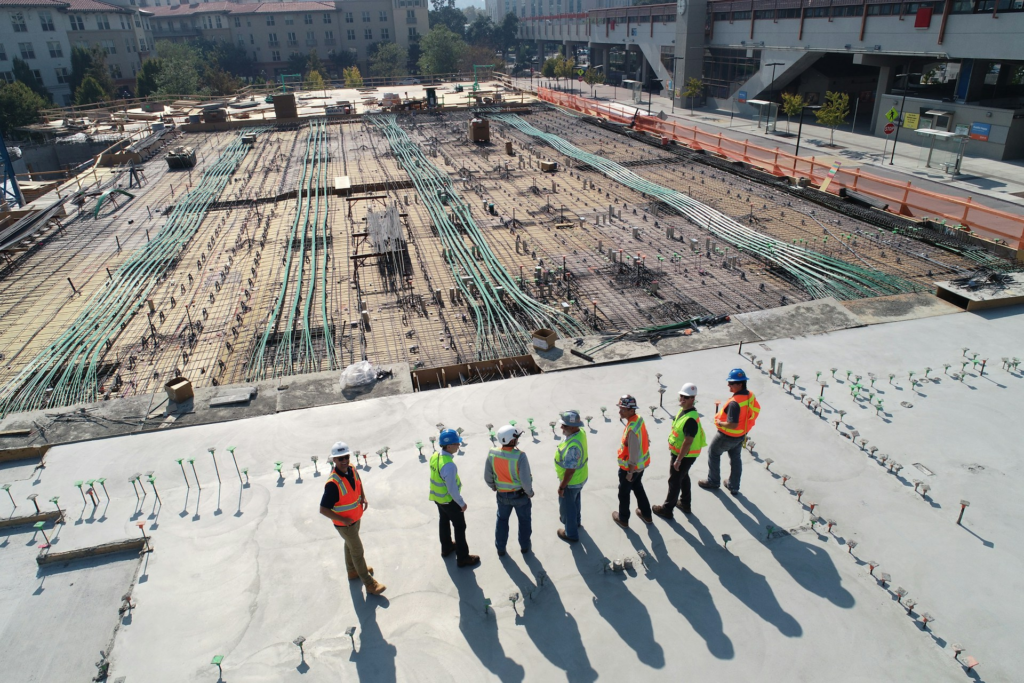Integrated Project Delivery (IPD) is a component of lean construction. The objective of this style of construction management is to reduce the number of construction projects that are delivered late or over budget, two of the most critical areas in the industry today. To achieve this, IPD relies on improved communication and collaboration throughout the organization and team, from the ownership of the project through to the builder and trade professionals.
A collaborative approach to construction management could help to pull all project stakeholders together, create a better level of understanding, improve overall communication and expectations, and yield efficient results. Optimizing project outcomes and reducing risks are also benefits of IPD.
The Efficiency Benefits of IPD in Construction Management
Incorporating IPD into construction management methods enables organizations to achieve a wealth of benefits. Every stakeholder could be impacted by the transformation. It brings together people, business models, structures, practices, and systems to align them to deliver better results. Some significant areas of improved efficiency include the following.
Early involvement of key project participants
Through IPD, parties come together sooner. From the project owner and contractors to individual trades, bringing key participants together at the earliest time possible helps improve decision-making and clarifies project scope. It helps ensure each party is on the same page.
If one party expects friction or difficulties with any component of the project early on, that is addressed sooner. This improves overall project efficiency because it streamlines communication and mitigates risk. Human resource management is also more streamlined. There are people involved earlier, so better planning for each phase of the project is possible.
Shared risk and reward incentives
In the IPD model, risk and reward are value-based. It is balanced between both parties and all team members. As a result, the group collectively decides to take on risks within the project, and, in the ultimate outcome, those risks pay off when everyone benefits.
In situations where there is a failure, the group collectively works to mitigate further risk, resolve the problems, and align future goals to avoid future failures. Whether it’s material that is not available or a design flaw, each party works towards an equitable solution.
Open communication and decision-making processes
Transparency in decision-making is one of the core components of this style of construction management. Improved communication and better overall insight into goals, objectives, limitations, and compliance help improve efficiency by reducing overlap of resources or mistakes that are easily avoided.
Within this method, all team members have access to the necessary information so that improved decisions are made at each level of the project. This not only helps minimize confusion but also supports a culture of accountability.
Continuous evaluation and improvement
Another notable benefit of IPD is the ability to provide constant oversight and opportunities for improvement. For example, when all components of the project come together, it is possible to gain more insight into project status, potential delays, necessary resources, and how to improve experiences, costs, and timelines.
Consider, for example, how this impacts some of the most critical resources in these projects: time and money. Through IPD, there is more transparency at each level, which leads to fewer wastes of time, money, and materials (along with any other resource). The direct result is that all parties are able to plan efficiently without overspending or utilizing too many resources. There is less time and money spent on changes and reworking during the construction project.
Focus on achieving project goals collectively
Goals are set within the project, but they are flexible as needed because all parties can be involved in that decision. For example, because processes and techniques come together, organizations can better anticipate future needs, order products and materials, involve permits, or line up the next trade before any delays occur.
This helps organizations better meet the challenges of the ever-changing construction environment. The end result then is more focus on achieving project goals and meeting objectives. It is not just the project manager who achieves those goals, but each member of the organization who contributes and works towards the finished project.
As noted by the American Institute of Architects, through IPD, several goals can be achieved:
- Facility managers, contractors, suppliers, and even end users share in the design process
- There is full transparency in what the goals are, and the entire project is outcome-driven
- Decisions are made collectively, and communication processes are clear and trusting
- There is a true goal of delivering the highest quality and sustainability
- All designers understand the ramifications of the decisions and the rewards that come from each element of the project
Moving Your Team Forward
Integrated project delivery fosters collaboration and innovation, leading to more efficient and successful construction projects. It enables all parties to equally benefit from the project’s success.
Construction Management is one of the numerous areas MRINetwork supports through our human resource planning and supportive services. Contact us to learn how we can help you.

Connect with MRINetwork